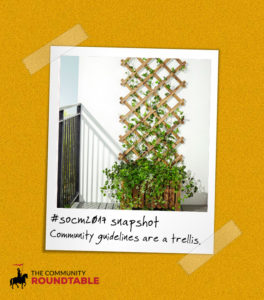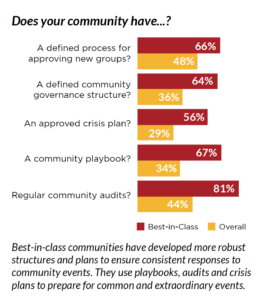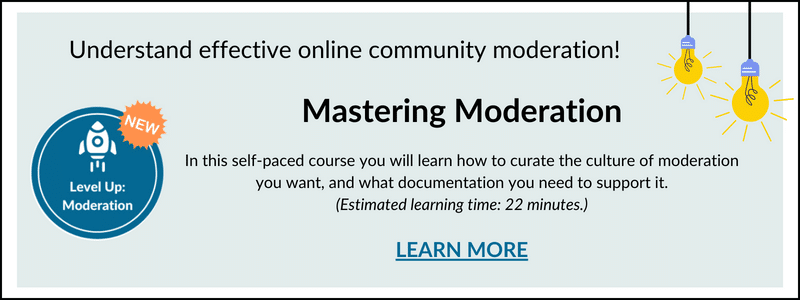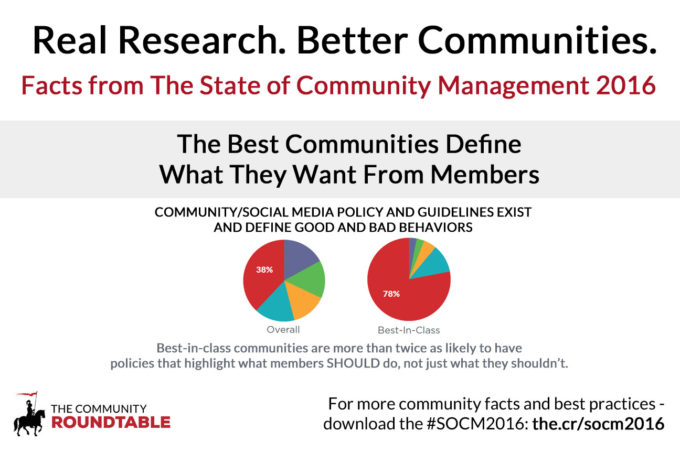 For years, community thought leaders in TheCR Network have highlighted the importance of community guidelines and policies that promote healthy community behaviors. Make your community guidelines and policies a trellis, rather than a box, and create a frame for your community to flourish.
For years, community thought leaders in TheCR Network have highlighted the importance of community guidelines and policies that promote healthy community behaviors. Make your community guidelines and policies a trellis, rather than a box, and create a frame for your community to flourish.
That is still true in 2017.
Our best-in-class communities are more likely to have policies and guidelines that define encouraged behaviors, and even the overall sample is becoming more likely to create positive guidelines and policies.
But there’s a second dimension to the trellis. In order for it to effectively support community behaviors, it needs to be built on a strong footing. In the case of communities, that footing comes in the form of policies, community guidelines, and procedures that ensure community professionals know how to handle the situations that are likely to arise in the life of the community, and do so fairly, quickly and consistently.

That consistent and fair approach comes from properly training community managers, moderators and others with leadership roles in the community, and from developing playbook and procedures that give them a menu of best practices for helping and supporting members. In the State of Community Management 2017 survey, best-in-class communities were far more likely to provide professional development for community managers, give training for moderators and advocates, and develop playbooks for the operation of the community.
Together, these elements give best-in-class communities a strong base for a trellis that can support a strong community.


 Communities – and 6-year-olds – tend to function best when there is some defined sense of appropriate behaviors. But there’s a catch. Policies and guidelines shouldn’t just explain what you shouldn’t do – they should highlight what you should. Once again this year, our best-in-class communities drive this home. The best communities are more than twice as likely as the average to have policies and guidelines in place that don’t just define what shouldn’t be done, but guide members to the behaviors that benefit the community.
Communities – and 6-year-olds – tend to function best when there is some defined sense of appropriate behaviors. But there’s a catch. Policies and guidelines shouldn’t just explain what you shouldn’t do – they should highlight what you should. Once again this year, our best-in-class communities drive this home. The best communities are more than twice as likely as the average to have policies and guidelines in place that don’t just define what shouldn’t be done, but guide members to the behaviors that benefit the community.
